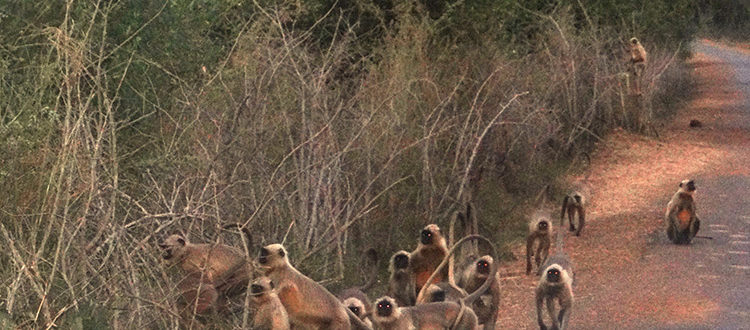It Takes a Village
By Mahendra Bhojram
“Mahendra! We need to quickly organise a peace meeting in Neri. We’ve been receiving continuous calls from them about human-langur conflict!” I had been strolling past the office of Mr Kulraj Singh (IFS), the Deputy Conservator of the Brahmapuri Forest Division one November morning last year, when he called out to me.
Human-Langur conflict? What could that entail, I wondered. From what I knew, it is humans and macaque monkeys that frequently come into conflict — our dietary ingredients are greatly exploited by macaques due to their virtually omnivorous diet. Langur monkeys on the other hand are primarily folivorous, meaning they survive mostly by eating leaves. They even have three-chambered / lobed stomachs that allow them to digest the driest of leaves through regurgitation and cud chewing! So what was this conflict about? Were they eating newly sown saplings (which sometimes they do) in farms or kitchen gardens? Or had one of them attacked some villager?
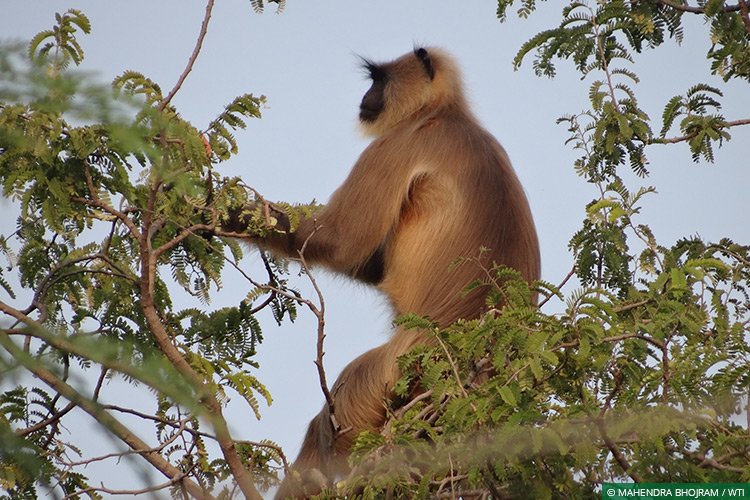
Monkey See, Monkey Don’t
My job as a sociologist with WTI’s Rapid Response Team (RRT) in Vidarbha is to respond to cases of human-large carnivore conflict as swiftly as possible, engage with the affected people, and pacify their anger and anguish. This case involved no big cat, but it was intriguing enough for me to want to investigate. Besides, I believe building bridges with local communities can go a long way in conserving wildlife. Who could say, after all, that the people of Neri wouldn’t face conflict with a tiger, a leopard or a bear in the near future? Garnering their goodwill could prove incredibly handy in such a situation. The Brahmapuri Forest Division’s helpline had also received a record number of calls from Neri and a few other adjoining villages regarding human-langur conflict: over a hundred calls in the past few months, so the issue indeed appeared to be boiling over!
I headed down to Neri with our RRT veterinarian Dr Syed Bilal Ali and assistant Dhanraj Jumnake, reaching the village in the afternoon. Right away I began to ask about the several complaints that the residents had lodged. What emerged after a number of individual and group discussions was that the issue centred on a troop of langurs that had taken up residence in the village. Bounding about with impunity, the langurs regularly left a trail of broken roofing tiles in their wake. A major turf war had also recently broken out with another langur troop and the monkeys had broken a tree branch that had short-circuited the power lines running through the village. To sum up: the villagers were annoyed, and with the mounting damage to property they had grown intolerant of the monkeys’ presence. They wanted the langurs gone.
Except… how does one go about shifting a entire troop of rather large langurs out of a village? I had absolutely no clue. With no real solution yet in mind, I mechanically began to do what I had been trained to do, both as a field biologist and a sociologist. I hung around the village and observed the langurs and their activities. I walked around the village’s periphery and took a closer look at the habitat. I conducted participatory rural appraisals so that people would collectively seek to work out a solution.
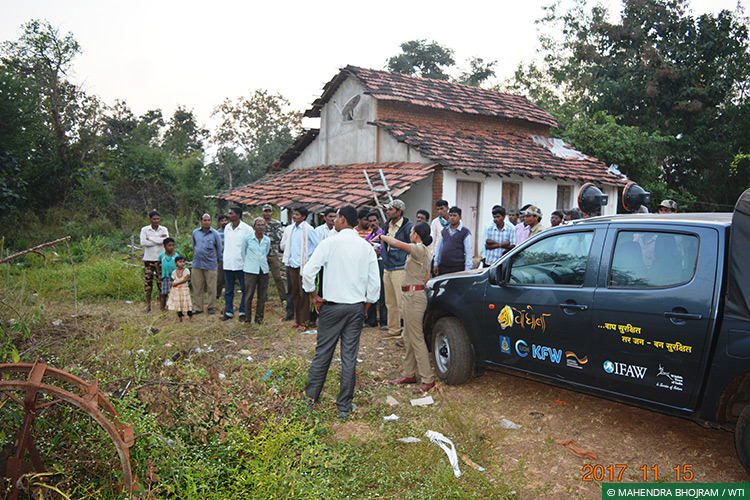
What I found was that although the village was hemmed in by agricultural fields on all sides, fruit and shelter trees, such as Dodka (Luffa acutangula), Bor (Ziziphus mauritiana), Babul (Vachellia nilotica) and Tur (Pisum sativum) were abundant within its area. There were also plenty of water sources around. I managed to identify four distinct langur roosting sites, and although I am not a primatologist, I figured there were at least three distinct troops of langurs inside or on the periphery of the village.
Over the course of several days, the forest staff, the villagers and I discussed mitigation measures that could work. The villagers were formed into three teams, each comprising 10 persons and headed by a forest guard. Team members were shown videos to educate them about langur behaviour and asked to engage with others in their neighbourhoods, including school teachers and important stakeholders, about the current situation and possible solutions. This was vital since it created a sense of involvement, so that any solution would be seen as arising from within the community rather than imposed by outsiders.
Together, we arrived at some short- and long-term measures. In the short-term, the villagers would lop off select branches from the langurs’ roosting trees within the village. Nails and shards of glass would also be cemented onto certain areas on the roofs of houses to deter langurs. The villagers would not provoke the langurs by attacking them. They would also minimise outdoor cooking, stop littering and ensure that garbage was not allowed to accumulate — for while langurs are primarily folivorous, there are still certain food sources in the human environment that can attract them. In the long-term, a massive plantation of nearly a thousand trees, of varieties preferred by langur monkeys, would be created on the forest edge. People in Neri and adjoining villages would also be sensitised about the behaviour and ecological importance of langurs.
I stressed on these last two measures during my discussions — only long-term measures would show lasting results, I said. It took several heated discussions and a lot of back and forth, but things began to happen — the lopping of select tree branches, the proper disposal of garbage. I found on follow-up visits that villagers were also planting saplings along the edge of the forest.
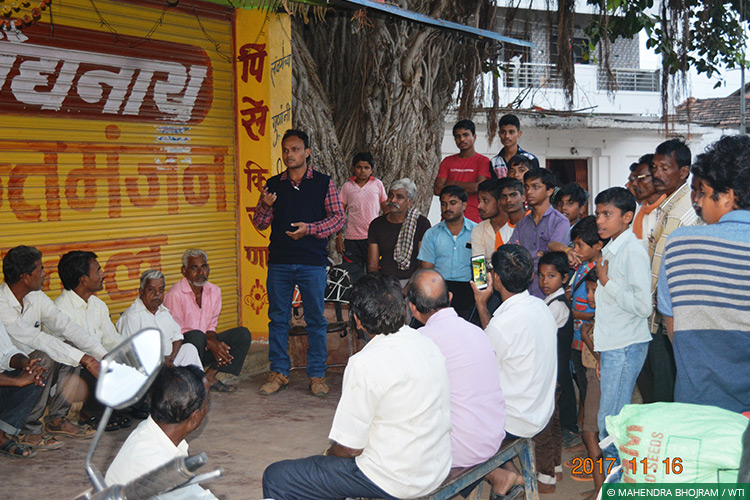
The Sweetest Fruit
It had been a couple of months since I had been to Neri. The Brahmapuri helpline had recorded no complaints about langurs in the interim. One day, some positive news arrived in the person of Mr Pundlik Khobragade, the Round Officer of Neri, who was visiting Brahmapuri. He was elated: the villagers had decided to implement all the measures we had evolved, and were adopting this model for coexistence with the langurs. I felt happy that my initiative had borne fruit. I was yet to know how sweet that fruit would be.
On February 17, 2018, at around 8am, a woman working in the cotton fields in Kalamb village, which lies in the Talodhi Range near Neri, was attacked and killed by a tiger. WTI’s RRT was called in to help identify the tiger and determine its whereabouts. When the team visited the site of the attack, they were surprised to encounter a rather passive crowd. The local people not only refrained from violence or unruly behaviour but extended their cooperation to the RRT and the forest department in ascertaining details of the case and the possible location of the tiger. The team, with the help of Mr Mandhare, a forest guard, subsequently installed four camera traps in the area where tiger movement had been observed. The attitude of the local people eased the situation to a great extent and allowed the forest department staff and RRT to track the tiger, and subsequently ensure that it returned back to the forest.
As in most cases, the attack on the woman was an unfortunate and accidental encounter, much like a mishap on a busy highway. Why should tigers or langurs for that matter be incriminated for accidental encounters, many of which are often provoked by humans or necessitated by anthropogenic factors? Why are we so quick to blame wild animals that are just trying to eke out an existence, much the way we are?
This understanding permeated well enough through the masses in follow-up meetings, bolstering my views on how simple things like timely support and open communication can help resolve conflict situations, leaving a lasting impact on local communities.
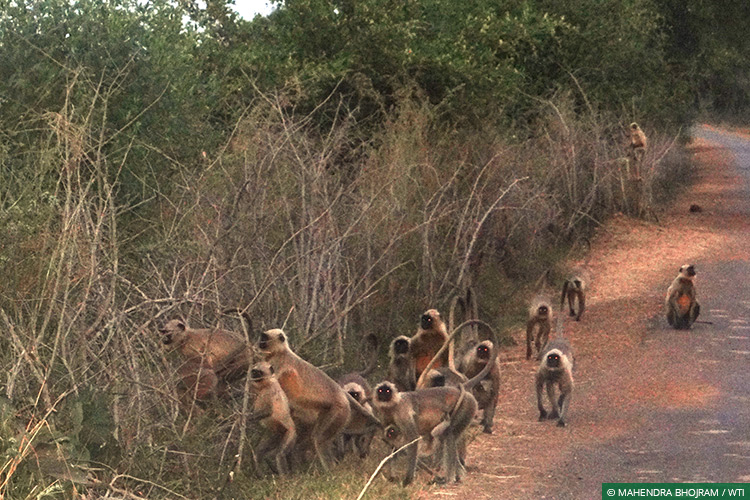
The author is a sociologist with WTI’s Vidarbha Tiger Project in Maharashtra.

